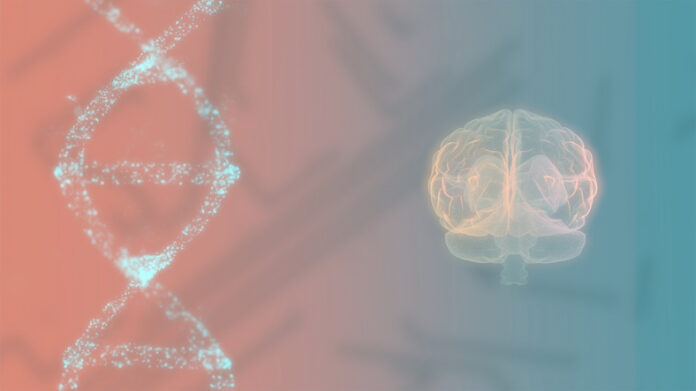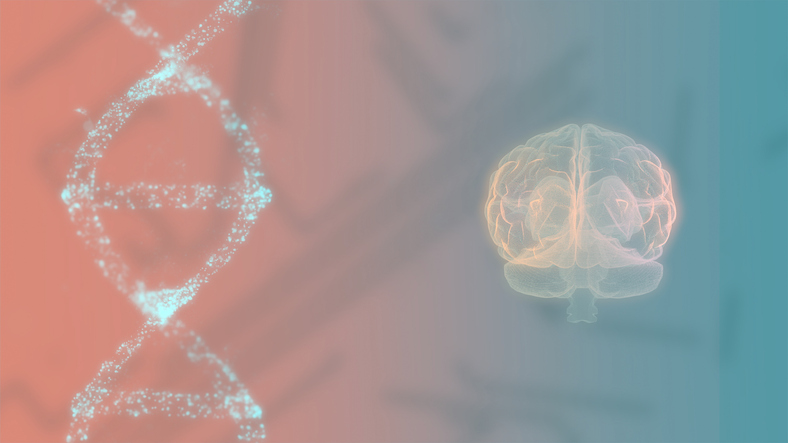 Credit: Floaria Bicher / iStock / Getty Images Plus
Credit: Floaria Bicher / iStock / Getty Images Plus
Researchers have long hypothesized that the genes influencing the architecture of the brain also play a role in determining mental health; however, the precise relationship between genetic predisposition for mental illness and the brain’s physical structure remains ambiguous. A recent study in Nature Mental Health, utilizing extensive datasets in genetics and neuroimaging, has elucidated connections in remarkable detail, uncovering a genetic network that associates psychiatric disorders with the structural composition of the cerebral cortex.
Genetic untangling of psychiatric disorders and brain structure
Psychiatric disorders are significantly impacted by genetics and frequently correlate with observable alterations in brain anatomy—variations evident not only in patients but also in their unaffected relatives and individuals with elevated genetic susceptibility. Extensive genome-wide association studies (GWAS) have demonstrated that brain structure is significantly heritable, with attributes like cortical surface area and thickness influenced by specific genetic mechanisms.
Surprisingly, only a limited number of genetic loci have been identified that affect both psychiatric risk and brain morphology, and conventional analytical techniques may overlook significant overlaps. This discrepancy arises because common methodologies, such as global genetic correlation or polygenic risk scoring, may underestimate shared influences when genetic variants affect the two traits in opposing directions. Standard statistical tools often miss shared genetic influences if the effects move in opposite directions. A variant might, for example, increase the thickness of one brain region while decreasing it in another.
To explore these associations, researchers from the University of Pennsylvania and the Children’s Hospital of Philadelphia examined genome-wide association study (GWAS) results from nearly 900,000 individuals of European ancestry, incorporating data from the Psychiatric Genomics Consortium on eight disorders: attention deficit hyperactivity disorder, alcohol use disorder, anxiety, autism, bipolar disorder, major depression, post-traumatic stress disorder, and schizophrenia.
Utilizing high-resolution MRI measurements from the UK Biobank and the Adolescent Brain Cognitive Development (ABCD) Study—the most extensive longitudinal investigation of brain development and child health in the United States—they quantified two critical attributes of the cortex: surface area, indicative of the cortex’s expanse across the skull, and cortical thickness, denoting the depth of the gray matter layer. These two measures possess unique biological origins and lack genetic correlation, indicating that the genes affecting one are frequently dissimilar to those affecting the other.
Seeing genetic and structural patterns
To accommodate bidirectional values, the researchers employed a Bayesian-based “conjunctional false discovery rate” methodology, capable of identifying shared variants regardless of whether their effects coincide or diverge. This strategy identified 55 genetic loci associated with psychiatric disorders and cortical surface area and 29 associated with psychiatric disorders and cortical thickness.
Not all genetic effects moved in the same direction. For most disorders, risk alleles were associated with either greater cortical thickness or smaller surface area, but this relationship was not universal. In schizophrenia, for example, there was a balanced mix: some variants tied to greater thickness, others to less, even within the same brain region. This bidirectionality may help explain why previous studies found low overall genetic correlation between psychiatric disorders and brain measures. By treating all variants as moving in the same direction, those earlier analyses may have missed the genetic tug-of-war happening beneath the surface.
The shared genetic loci were enriched in genomic regions active in the brain and involved in processes such as synaptic organization, neuronal development, and metabolism. Many overlapped with genes differentially expressed in the postmortem brains of people with psychiatric disorders. Still, the overlap was not uniform. Autism and PTSD, for example, sometimes showed opposite genetic effects on the same brain structures, such as the dorsal prefrontal cortex, echoing earlier neuroimaging findings that the two conditions can be associated with different patterns of cortical change. While the research identifies genetic variants linked to both brain structure and psychiatric disorders, it does not prove that one causes the other. Both may arise from overlapping mechanisms acting through shared molecular pathways during brain development.
To further delineate the neuroanatomical profile of shared genetic influences between regional brain structure and risk for psychiatric disorders, the researchers turned to an approach called FUMA. This integrative web-based platform facilitates functional annotation of GWAS results, gene prioritization, and interactive visualization while accommodating positional, expression quantitative trait loci (eQTL) and chromatin interaction mappings, and provides gene-based pathway and tissue enrichment results.
Shared genetic influences were distributed along a hierarchical axis of the cortex. At one end lay the primary sensorimotor and visual cortices, regions specialized for basic perception and movement, which showed strong links with genetic risk for conditions like ADHD, bipolar disorder, and schizophrenia. At the other end sat the association cortex, involved in more complex and internally focused thought, which showed different patterns of overlap, particularly for surface area in depression, ADHD, and bipolar disorder. This organization mirrors known gradients in cortical gene expression and neural connectivity seen across species.
Limitations and future directions
These findings offer one of the clearest pictures yet of how shared genetics can shape both mental illness risk and brain anatomy—and why the relationship is anything but straightforward. They also underscore the need for more nuanced genetic tools. Instead of boiling down risk to a single polygenic score, future research could develop pleiotropy-enriched scores that account for both converging and diverging effects. While the research identifies genetic variants linked to both brain structure and psychiatric disorders, it does not prove that one causes the other. Both may arise from overlapping mechanisms acting through shared molecular pathways during brain development.
The study’s scope was limited to individuals of European ancestry, meaning it remains unclear whether the same patterns hold across more diverse populations. Extending the research to encompass global datasets is essential to facilitate the equitable dissemination of genetic insights. By pinpointing these shared genetic factors, scientists may eventually uncover biological targets for prevention or treatment and better understand why some genetic risks manifest differently in different people. For now, these results serve as a reminder that the relationship between mental illness and brain structure is not linear, but rather a complex web of connections, which genetics is gradually unraveling.

